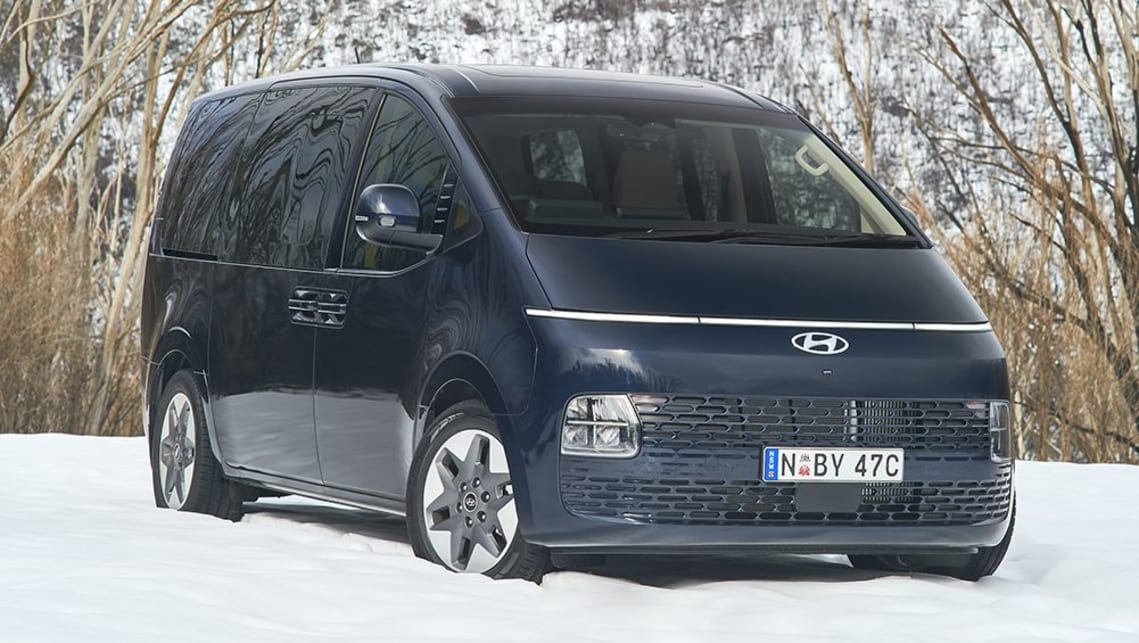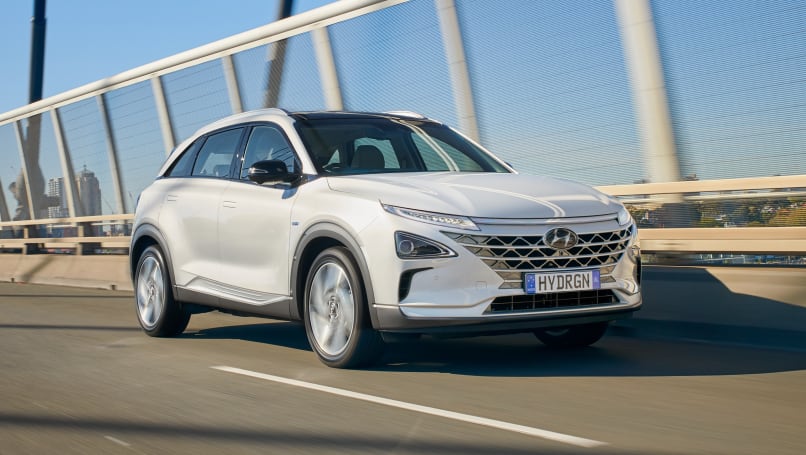
Hyundai Australia studying hydrogen fuel-cell Staria potential as environmentally friendly alternative to Kia Carnival and Honda Odyssey
- Hyundai Staria
- Hyundai Staria 2022
- Hyundai News
- Hyundai People mover Range
- People mover
- Electric Cars
- Hyundai
- Industry news
- Showroom News
- Hydrogen

Hyundai may have just revealed its future hydrogen fuel-cell plans, which includes a more environmentally friendly Staria people mover, but the brand’s local division is already considering the potential for the eco-powertrain.
Speaking to journalists at the launch of the new Staria, Hyundai Australia product general manager Andrew Tuitahi said the Korean brand is looking at all options for the future.
“We’re interested in all alternate fuel options, it’s a little bit too early for us to make any comment or commitment to that car right now, but we’re definitely keeping an eye on it,” he said.
“Watch this space.”
Read more about Hyundai
- 2022 Hyundai Staria joins Tucson and Genesis GV70 in missing out on an Australian suspension tune, but Korean brand committed to bespoke adjustment program
- Hyundai's next-generation fuel-cell stacks revealed: Why the Korean brand thinks you'll be considering an affordable hydrogen car by 2030
- How Hyundai and Kia will leave petrol and diesel behind: Korean giant's grand electric plans headlined by battery and hydrogen fuel-cell power
Hyundai announced earlier this week it will produce a second-generation of the Nexo SUV, and a “hydrogen-powered multi-purpose vehicle (MPV) model”, understood to be a fuel-cell electric vehicle (FCEV) Staria for 2023.
Powering the next slate of FCEVs will be an evolution of Hyundai’s current technology, expanding on range while also being smaller in size.
Two outputs were revealed for the next-gen fuel-cell tech, a 100kW unit designed for passenger and light-commercial vehicles, and a 200kW version with intentions for larger commercial applications.
The 100kW stack is around 30 per cent smaller than the current powertrain found in the existing Nexo, making packaging easier.
For reference, the current Nexo SUV makes use of a 120kW/395Nm electric motor, fed by a hydrogen system capable of generating 135kW.

Driving range is also expected to improve as hydrogen technology matures, though the current Nexo already boasts a sizeable 666km of driving range on a full tank.
FCEVs can be refuelled with hydrogen as quickly as a petrol or diesel car, but are driven exclusively on electric power and produce just water vapour as a by-product, making them an appealing alternative to full battery electric vehicles that require long recharging times.
If the Staria FCEV materialises for Australia, it would offer a more environmentally friendly alternative to the popular Kia Carnival, which is sold with either a petrol V6 or turbo-diesel engine.
Likewise, the current Honda Odyssey is offered exclusively with a petrol engine, but a new-generation version tipped to be revealed next year is rumoured to score a petrol-hybrid powertrain to appeal to frugal families.
The Staria people mover line-up lands in Australian showrooms this month with a choice of either a 200kW/331Nm 3.5-litre petrol V6 or a 130kW/430Nm 2.2-litre turbo-diesel, priced from $48,500 before on-road costs.










Comments